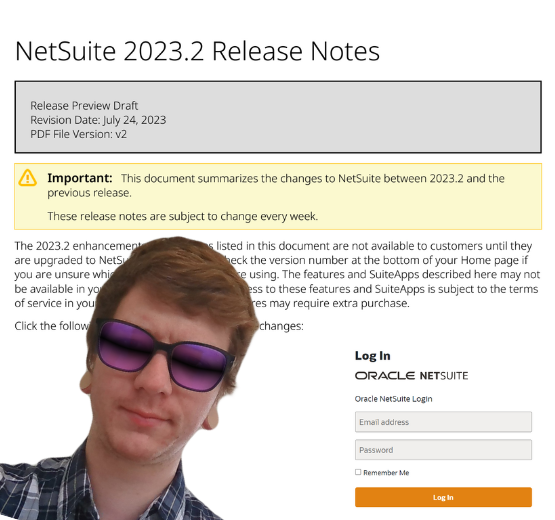With an ever-increasing number of legacy business software products now on official ‘sunset’ status or past end-of-life – from SageLine 500 and Sage 1000 to versions of Microsoft AX – time is of the essence for businesses using such solutions to plan their migration projects. But what can a switch to the cloud offer that is so appealing? Is it really worth leaving the on-premise days behind altogether?
With Software as a Service (SaaS) now more advanced than ever before, businesses can strive to exceed expectations; and most importantly, on their own terms. From finding efficiencies through automating everyday processes, to data-driven, real-time performance updates, we explore just four of the top reasons to ditch your on-site servers and make the switch to cloud software.
1. Collaboration from afar
With the ongoing adjustment of remote-working operations, cloud-based collaboration transforms the way we communicate; wherever our desk happens to be that day, and regardless of the time zone. ERP solutions continue to re-define the way businesses interact – both with other businesses and their own customers – thanks to enhanced access and visibility of key processes via one centralised hub. Such a solution also offers more flexible environments from which to thrive, driving workforce mobility and scalability on an even grander scale. For businesses eager to foster an inclusive, collaborative culture, cloud ERP ensures distance knows no bounds – driving productivity and improved wellbeing among employees as a result.

For those with the right security privileges, accessing information from a single unified platform empowers teams to collaborate on new levels. Whether accessing, viewing, sharing or editing, a single version of truth also ensures users are working from the same projects in real time. Furthermore, centralised document management can streamline everyday access requirements that past siloed processes would have likely hindered. Thanks to the virtual nature of cloud software for anytime, anywhere access to documents, greater visibility of workflows can also contribute to business-wide productivity.
2. ‘Always-on’ and up to date
Gone are the days of waiting for software to update – and processes suffering as a result. With cloud ERP systems, automatic updates mean teams are always operating from the most up-to-date version. Not only does this drive optimal productivity thanks to evolving functionalities, but it also enables businesses to abide by regulations and maintain compliance standards. Always-on upgrades to cloud software also save companies time and money – from eliminating the need to update server application and desktop devices, to seamless compatibility with newer applications that arrive in the future. From a surveillance perspective, ongoing improvements to speed and security also ensure greater protection against threats.

This doesn’t mean system updates are thrust upon a business without warning. With NetSuite, for example, in-depth documents are available in advance as well as access to a Release Preview account. Here at BrightBridge, we always ask one of our consultants to review the new features and write a blog post on their top picks – like this post on the NetSuite 2022.1 Release – and customers can rely on us to assist them in getting to grips with anything significantly different. Furthermore, we occasionally deep-dive into functionality such as NetSuite’s updated bank reconciliation and our bi-monthly Customer Roundtable events allow us to demo features and to answer questions in an open forum.
3. Enhanced security as standard
For the majority of businesses dealing with all forms of sensitive data, elevated levels of security are paramount to the safeguarding of such information. With on-premise solutions previously stowing data away on physical devices, cloud ERP mitigates the risk of a breach by storing data via secure, encrypted servers. What’s more, with increased visibility and access to data from anywhere in the world, customers are alerted to any suspicious activity immediately. When it comes to the all-important backing up of data, cloud-based solutions also deliver a seamless recovery process in the event of a disaster. Multiple levels of redundancy also guarantee the retrieval of records for ultimate peace of mind.
4. Cost effective across the board
Finally, companies ready to migrate to the cloud can reap cost-saving benefits as a result; so much so that many businesses choose to make the move for this reason alone. Furthermore, ERP systems are not solely for large businesses in a way they once were, and more smaller businesses are making the move to solutions like NetSuite. Those companies that implement an integrated cloud-ERP system early not only save time and money, but are in an immediately better position to be able to strategically grow. But how can SaaS applications tangibly save customers money in a way that on-premise solutions will always struggle to do so?

When it comes to ownership, the ability to pay the subscription, per number of users, monthly or yearly – as opposed to the perpetual resource required to keep servers functioning – makes cloud solutions far more flexible options. The elimination of hardware, server and workforce costs synonymous with on-premise systems therefore keep operational costs to a minimum. Where long-term performance is concerned, the ongoing routine maintenance of cloud systems ensures optimised functionality at all times.
What’s more, migration to an ERP system is not an all or nothing situation and often we design multi-phased projects so that the project doesn’t overwhelm the business or the staff who will be hands-on with the new interface and processes. In this recent blog post – 5 steps to 360-degree ERP integration: a phased approach for the manufacturing sector – we look at a logical stairway to implementation for manufacturers to scale and grow at their own pace.
Whether you’re looking to reduce costs, find efficiencies through automation, or gain greater insight into your current processes – is your business ready to make its move? As experienced 4-star NetSuite partners, we help make your migration from outdated systems a smooth one. If you’re a Sage 1000 or SageLine 500 user seeking a new solution, BrightBridge is currently undertaking a number of these types of projects, so why not check out our ‘Reasons to Switch from Sage’ guide.
Contact our friendly team for an initial chat and start your migration journey today.
Keep reading

What is a NetSuite implementation partner? How do you choose one?

Technology fit for total customer service in 2024

Retail and wholesale distribution: how to improve supply chains

Ditching Sage 1000: what you need to know from businesses that have done it

6 ways AI-ready Microsoft Dynamics 365 helps chartered associations serve members

6 retail and wholesale distribution challenges and how NetSuite solves them

The most exciting features in Microsoft Dynamics 365 2023 Release Wave 2

How to manage a new NetSuite Release: one expert's update process

What’s in NetSuite Release 2023.2?

